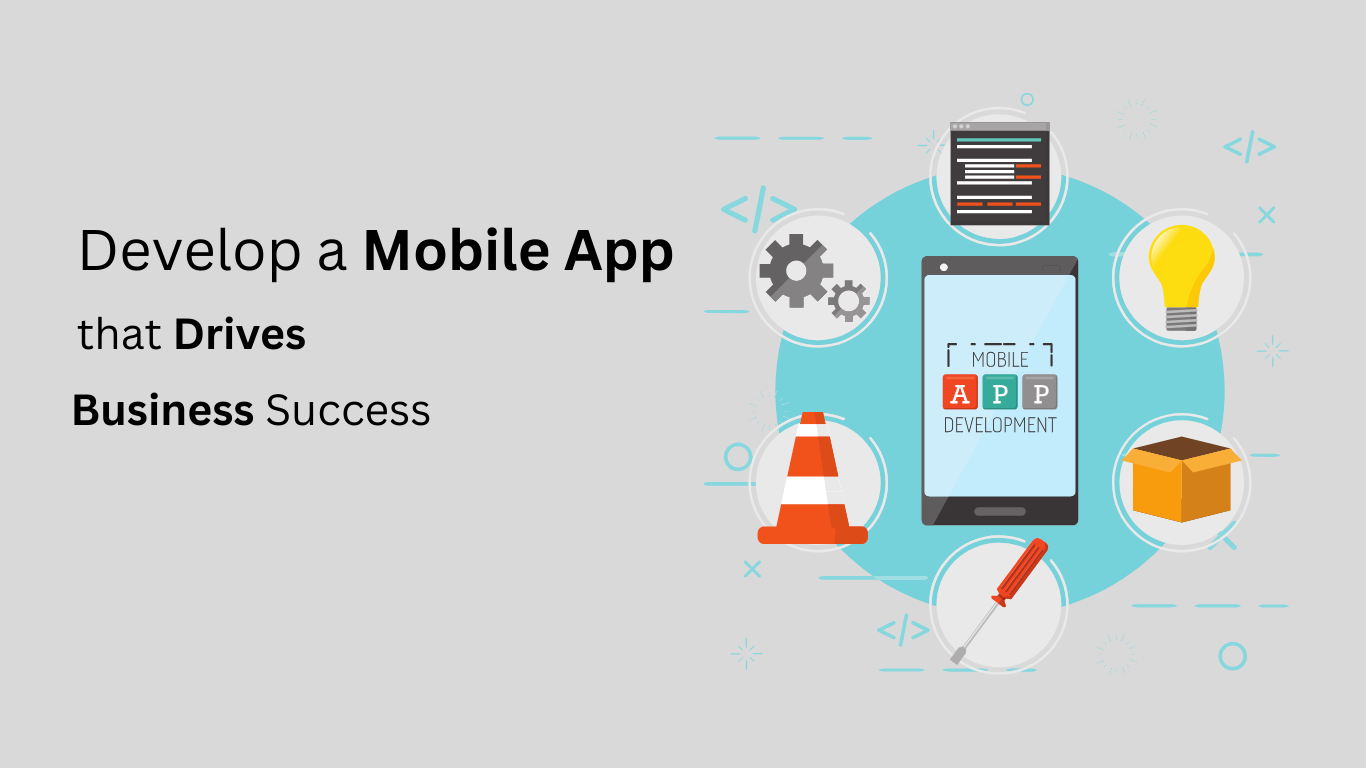Mobile applications have changed how people connect and interact with businesses. These digital companions have transformed consumers’ daily routines from ordering food and booking rides to shopping and banking. But with millions of apps vying for users’ attention, developing a mobile app that drives business growth requires a strategic approach.
Imagine having a mobile app that engages your customers, streamlines your operations, boosts revenue, and gives you a competitive edge in the market. In this article, you’ll learn how to develop a mobile app to drive business Success in 2024. You can achieve all that. Read on for expert tips to turn your vision into a powerful tool that positions your business at the forefront of innovation!
Understand Your Business Needs and Market Demand to develop mobile app
Before you start your mobile app development process, take the time to understand your business requirements and what the market needs. Start by defining clear objectives about what you’d like the app to achieve. Are you looking to increase sales, improve customer service, or offer a new service?
Once you define your goals, research your target audience. Who are they? What do their daily activities look like? What type of mobile technology do they use? These questions will help you develop a progressive web app that aligns with your business requirements and meets user expectations.
While your in-house team can develop the mobile app from start to finish, bringing in mobile app development services may be a good idea, especially if you lack the necessary expertise or resources. A mobile app development company with professional app developers has the technical skills to build robust, scalable, and quality apps. They also have the experience to navigate the complexities of app-building lifecycles.
Choose the Right Technology

Choosing the right technology stack is very important to development. Scaling your app means you must decide whether to go for a native app designed specifically for one platform, such as Android or iOS apps or build a cross-platform app functional on multiple mobile platforms.
Native apps usually offer superior performance and user experience (UX), though they require more resources and time to develop. On the other hand, cross-platform apps provide a faster and cheaper way of reaching a broad audience. However, they might sometimes fail in performance and UX. The choice will depend on your timeline, budget, and business needs.
Plan for your Mobile App Development
Confidently plan for your app development with your business objectives and target audience in mind. This phase should include mapping the app’s core features, responsive design, and user journey, all of which are crucial for the usability and success of your app.
Decide on the main functionalities that’ll align with your long-term goals. For instance, if increasing sales is your objective, mobile app features such as push notifications for promotions and a seamless checkout process could be vital. Other examples could include loyalty programs for customer retention, in-app chat for customer support, or integration with social media platforms for brand awareness.
Reassure yourself about the effectiveness of your planning by considering the value of user feedback at this stage. Organize focus groups or conduct surveys to get input on your app’s design and functionality. This feedback will guide your design and ensure the target audience receives and appreciates it.

Design for Engagement
Your mobile app’s user interface (UI) and UX design should be outstanding. It should be intuitive, easy to navigate, and aesthetically pleasing. Good app design attracts users and ensures their retention. Ensure the app’s design aligns with your brand identity and multiple platforms.
Accessibility should also be a priority in design. Ensure your app is usable for people with disabilities, considering colour contrast, text size, and voice commands. This will broaden your app’s user base and ensure compliance with legal standards like the Americans with Disabilities Act (ADA).
Develop and Test Your Mobile App
With the plan and design in place, you can now bring your app idea to life. An agile software development method, which involves iterative development and regular testing, can be particularly effective here. It’ll allow flexibility and adjustments as you learn more about your app’s performance in different scenarios.
Testing is integral to this phase. You should test your app for usability, compatibility, functionality, and performance. Consider using beta testers to give you some real-world feedback. This process helps unearth issues before full launching, reducing the risk of poor user reviews that could stifle adoption.
Launch and Market Your App
After mobile application development and testing, the next step is to launch your app project. A strategic launch plan is crucial for its success. This should include timing the launch, creating a buzz with marketing efforts, and partnering with influencers or other brands to reach wider audiences.
Your mobile app marketing strategy should clearly articulate your app’s benefits and why it stands out from the competition. Use email marketing, SEO, Social Media and other channels to reach your target audience effectively.

Consider Continuous Improvement and Scaling
After the launch, gather user feedback to improve your app continually. Monitor user interactions and app performance to understand what works and what doesn’t. Regular updates based on this feedback can keep your app relevant and engaging.
Scaling your custom mobile app as your user base grows is also critical. Ensure that your development can handle increased traffic and data, and consider internationalizing your app if you’re reaching users across different regions.
Conclusion
Developing a mobile app that drives business success requires a well-thought-out strategy, from understanding your market to continuously improving the product. Following these strategic steps and looking at a data-driven, iterative approach will position you to develop a mobile app that meets your business goal, is valuable to the business, and is engaging for the users.
Remember, a successful app is a journey, not a destination. Monitor, adapt, and innovate constantly so that your mobile app remains a potent facilitator for business growth and a tool to help your business succeed amid the changing mobile app landscape.
This article explains how to develop a mobile app to drive business Success in 2024. If you enjoy this article, please share it with your friends and leave your comments in the comment section if you have any questions.
If you want to watch a video tutorial on WordPress, you can visit my YouTube Channel and watch it from there. Thanks


